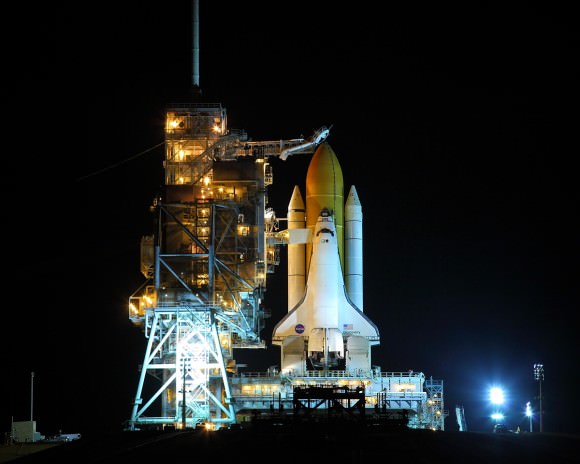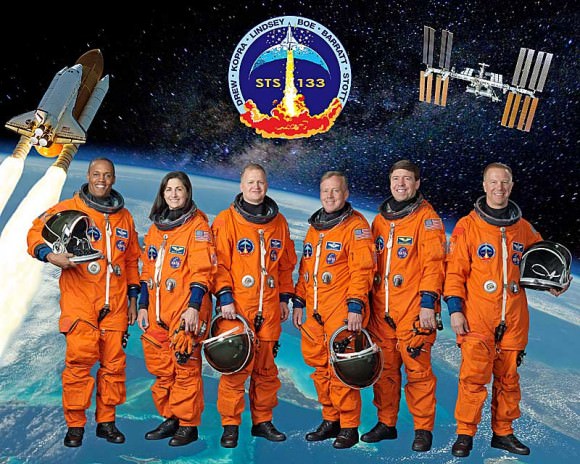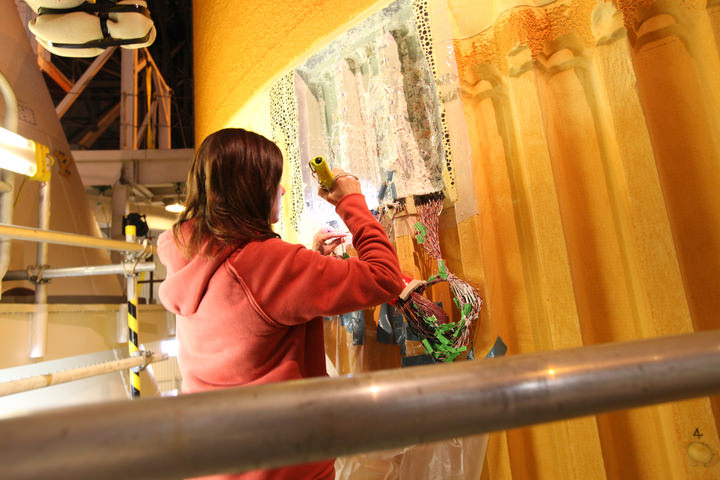[/caption]
Discovery’s woes deepened this week with NASA engineers finding even more cracks in the orbiter’s external tank. The first crack was noted shortly after a leak was discovered on the Ground Umbilical Carrier Plate (GUCP) Nov. 5. After the first crack was found, technicians found a second and then a third. NASA found the crack on support beams dubbed ‘stringers’ around the intertank region of the tank. They applied what is known in the business as a doubler, a section of metal that is twice as thick as the original – this is done to strengthen the affected area.
On Dec. 17, a tanking test was conducted on the tank. Some 89 instruments were attached to the outside to monitor the tank as it was filled with super-cold liquid oxygen and hydrogen. The external tank can shrink by as much as an inch when these extremely cold liquids enter the tank. As one might imagine, this creates great stress on the tank, as such mission managers had the orbiter rolled back into the Vehicle Assembly Building (VAB) for X-Ray scans and other tests.
These tests are considered to be ‘non-destructive’ but NASA is not able to conduct them out at launch complex 39A. Testing started as soon as the full stack consisting of the orbiter, ET and twin solid rocket boosters were in the VAB.

However, once these scans were completed – NASA had more problems, more cracks were found. Four cracks were found hiding beneath the foam on the side of the ET that faces away from Discovery. Mission managers will now weigh whether-or-not they will go ahead with repairing the damaged section of the ET. They are scheduled to make a final determination on Monday, Jan. 3. If they elect to do so, the repairs will be conducted inside of the VAB and not out at the pad.
STS-133 is a resupply flight to the International Space Station (ISS). When it does launch, it will carry the modified Leonardo Permanent Multipurpose Module (PMM) to the orbiting outpost. Contained within that is the first human-like robot to fly into space – Robonaut-2 (R2). Currently, Discovery is scheduled to launch no-earlier-than Feb. 3 at 1:37 EDT. This mission will mark the 39th time that Discovery has taken to the Florida skies and will be the final scheduled mission in the orbiter’s career.



Boy, I’m sure glad NASA put their crack team on this!
[And I will be even happier when the Shuttle technology, as it is, is decommissioned. Poor thing, it seems band aided every time it flies.]
Oh, and I wish fair skies for the new year to all astro-fans!
Crack Kills.
Wouldn’t be a lot easier if NASA simply used the transporter??? I believe there’s still at least one remaining somewhere at Paramount. 🙂